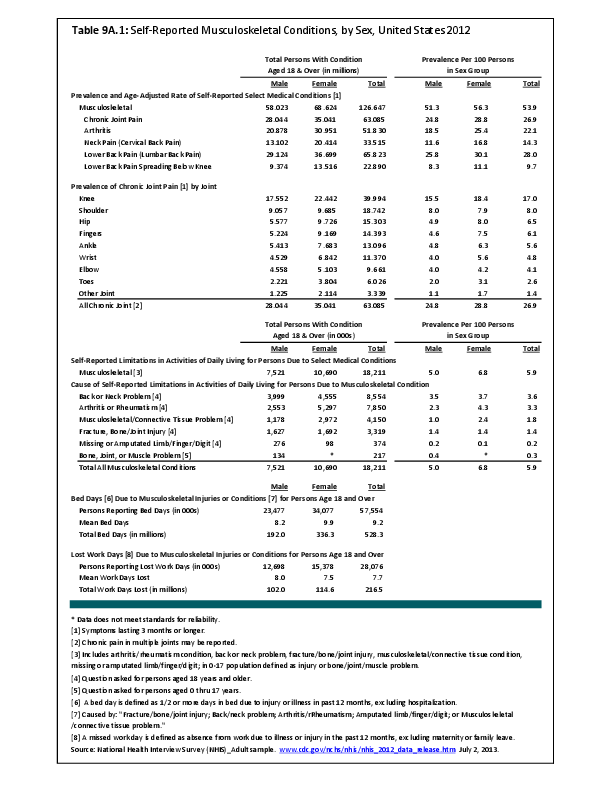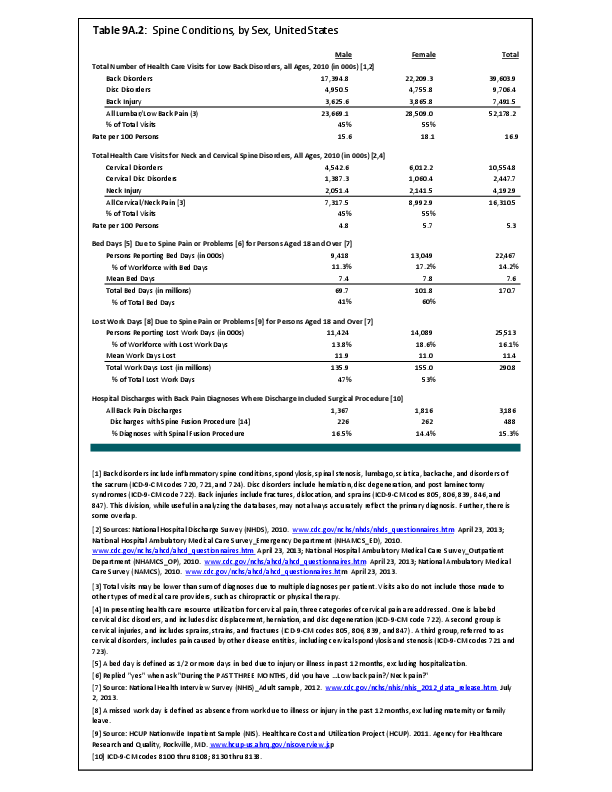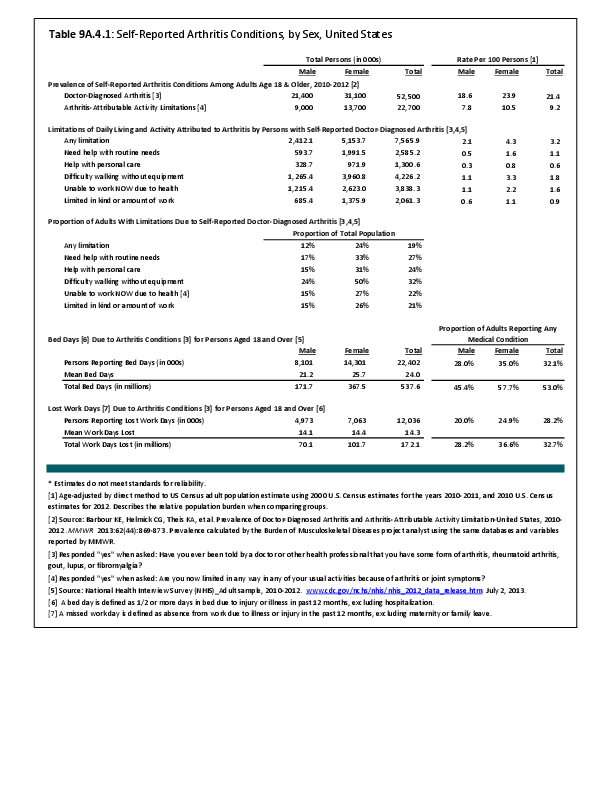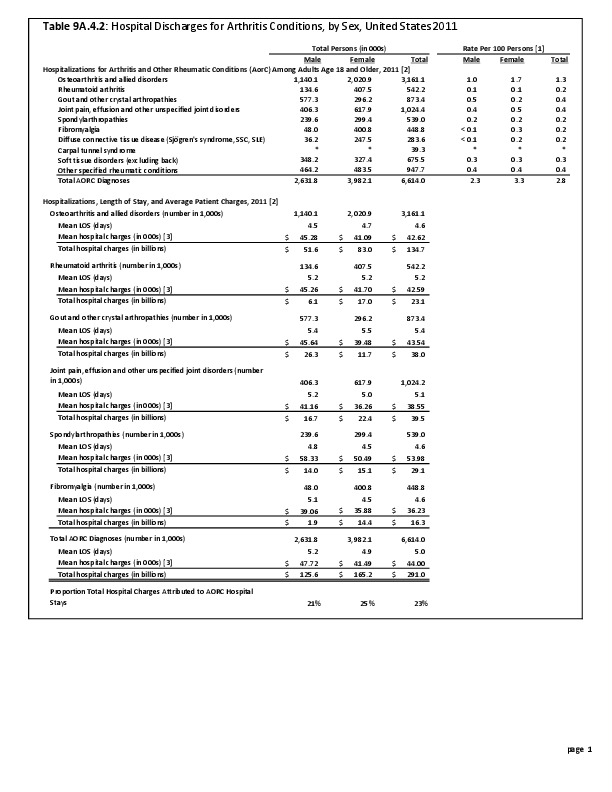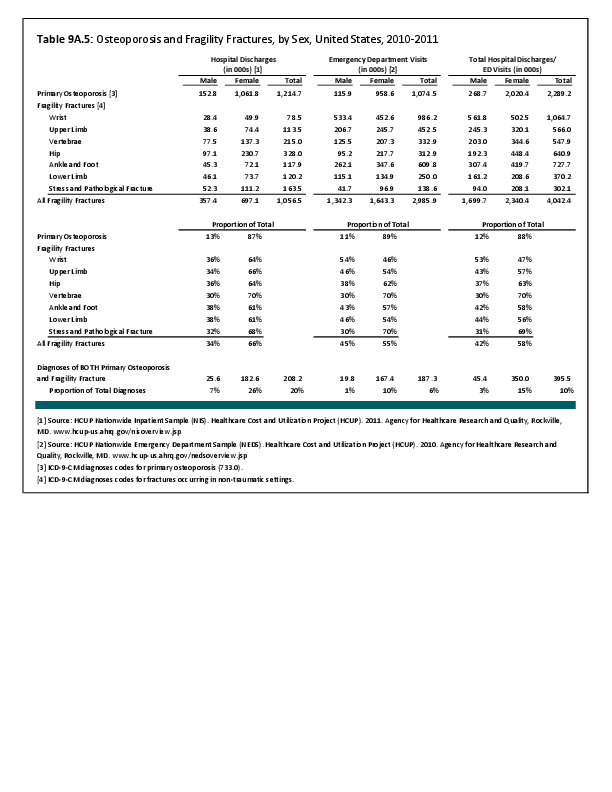Women report musculoskeletal and chronic joint pain at slightly higher rates than men do. The greatest difference is in self-reported rates for arthritis, with more than 25 women in 100 over the age of 18 years reporting they have arthritis, compared to 19 men. However, more than half of both men (51%) and women (56%) report they have musculoskeletal pain, in either the back, neck, or joints. (Reference Table 9A.1 PDF CSV)
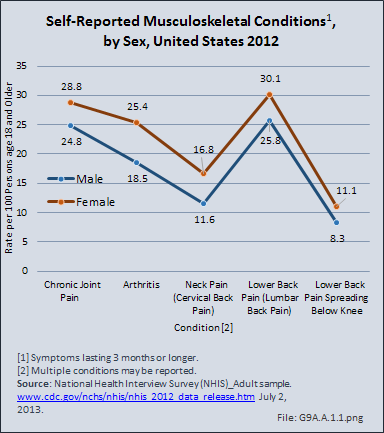
The knee is the most common joint with chronic pain reported by both men and women, followed by the shoulder. Women are much more likely than men to complain of issues related to their patellofemoral joint and to present with anterior knee pain syndrome. Several etiologies have been suggested for this, including sex-based differences in anatomic alignment, such as larger Q-angle; tendency toward foot pronation; increased femoral anteversion, genu valgum, external tibial torsion, and tibia vara; as well as a variety of other anatomic differences such as patella alta, shallower femoral notch, narrower patellae, patellar ligamentous hypermobility, insufficient VMO versus vastus lateralis, generalized ligamentous laxity, tight lateral patellar retinaculum, and tighter IT band.
Shoulder and elbow joint pain is reported at similar rates by men and women. For all other joints, women are slightly more likely to report chronic joint pain. (Reference Table 9A.1 PDF CSV)
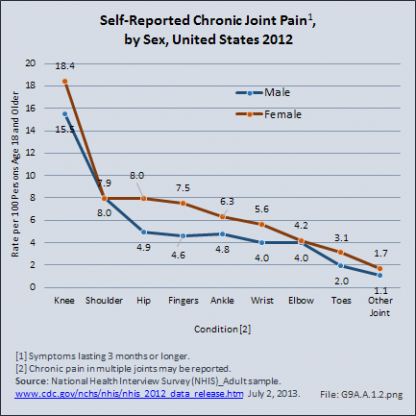
Edition:
- 2014


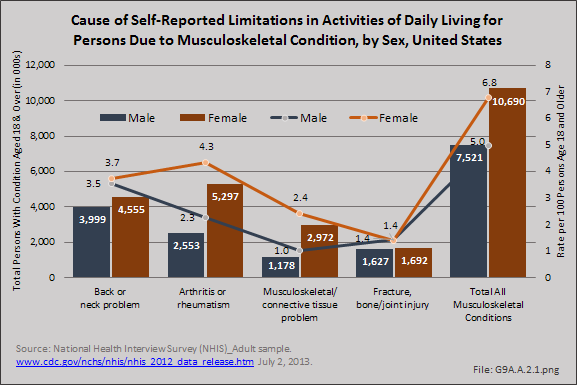
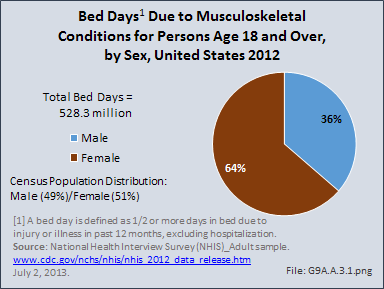
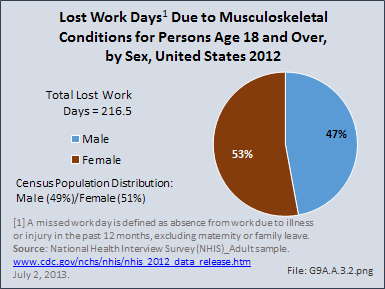

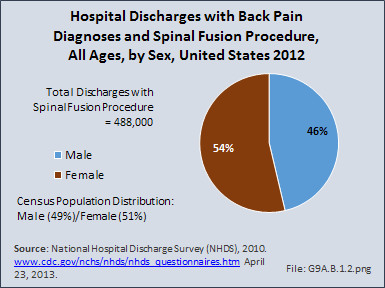
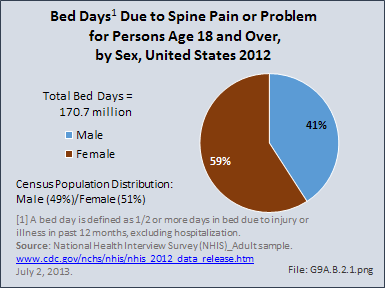
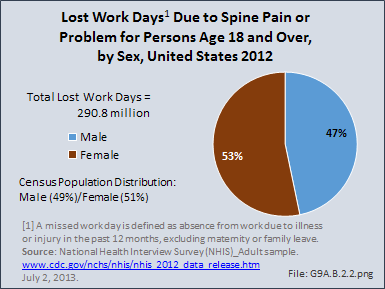


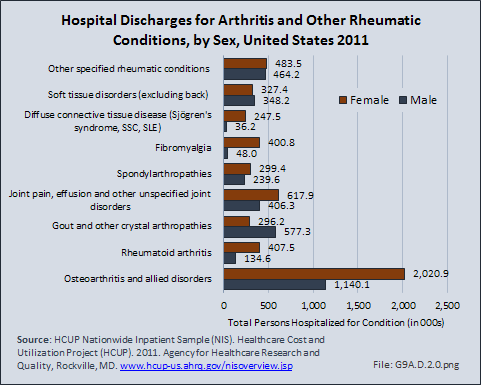
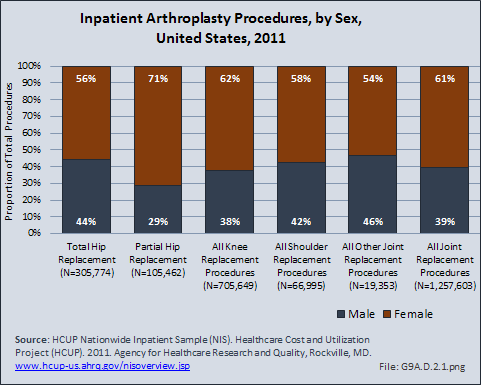
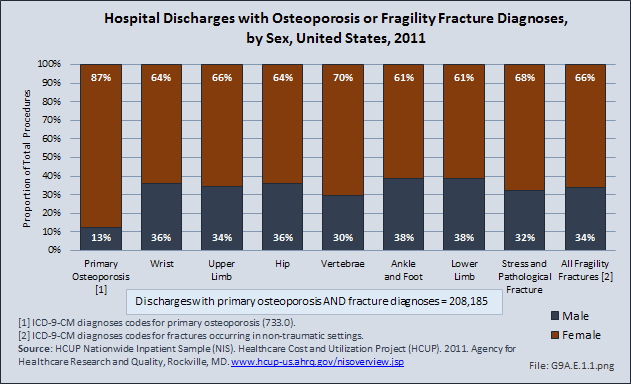



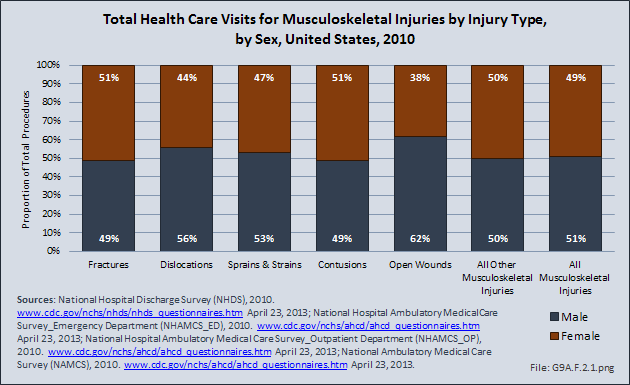
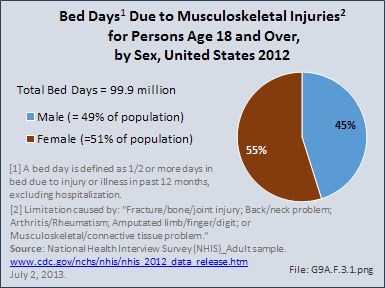
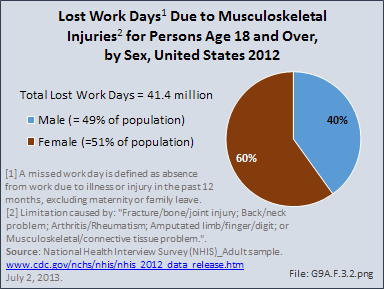

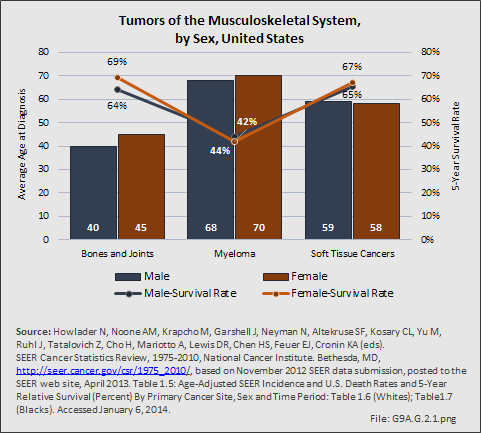
 Download as CSV
Download as CSV